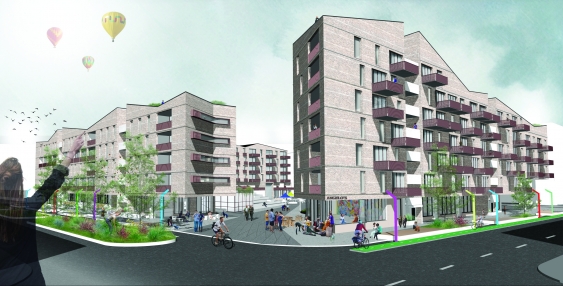Is clever design a key to addressing housing affordability?
A new apartment design could support the build-to-rent model, while enhancing social interaction and quality of life for Australia’s “generation rent”, says masters graduate James Paviour.
A new apartment design could support the build-to-rent model, while enhancing social interaction and quality of life for Australia’s “generation rent”, says masters graduate James Paviour.

A new apartment design could support the build-to-rent model, while enhancing social interaction and quality of life for Australia’s “generation rent”, says masters student James Paviour.
A graduate from the University of New South Wales’ Masters of Architecture program, Paviour (pictured below) has developed a residential model that addresses the complex challenge of housing affordability.
Paviour’s project, Inverting the Dream, demonstrates how flexible design can enhance social interaction and improve affordability for Australia’s growing population of young renters.
The multi-level design features five different housing types, including a five-bedroom share unit, a family-sized apartment and “micro-units” that revolve around shared living spaces.
Among the smart ideas, five-bedroom apartments promise to eliminate the traditional share-house squabble over who gets the biggest bedroom. “Each bedroom is the same size, so anyone can come in and occupy a room and pay the same share of rent”, he says.
 This product isn’t just perfect for shared houses, but also for “people who want to sign up for a room in an apartment through a management company, rather than go through the hassle of finding a place on their own”.
This product isn’t just perfect for shared houses, but also for “people who want to sign up for a room in an apartment through a management company, rather than go through the hassle of finding a place on their own”.
The design also includes “live-work” units, with a shop or office on a lower level that faces the street, and a one or two-bedroom apartment above.
Micro units are “a bit bigger than normal student dorms, with up to 20 sqm of space, as well as a shared living area and kitchen. The idea is to offer low cost, affordable and short-term options”.
Paviour has also increased the amount of communal space from 25 per cent to 45 per cent, “so that almost half of the building is courtyards and rooftop gardens”.
Even the standard two and three-bedroom units present a twist. “Their modular design means that people can change the unit configurations by moving walls. This offers more flexibility around bedroom size.”
Paviour’s project comes as build-to-rent schemes – where developers build properties with the intention of renting out units out rather than selling them – gain more attention from governments and institutional investors.
The latest Rental Affordability Index, released last month by National Shelter, Community Sector Banking and SGS Planning & Economics, has found that Sydney remains the least affordable city in Australia, followed by Hobart. Low and moderate-income households are struggling to afford rents, especially in Sydney and Canberra.
Paviour, who is currently in his mid-20s and works with Allen Jack+Cottier Architects, says he’s been renting in Sydney for the last five years and has “found it a bit of a nightmare”.
“I started off with the basic question: how can we make renting better?”
He points to the mature build-to-rent markets in the United States and United Kingdom, which have “maximised the advantages of the rental model over home ownership in terms of flexibility, and the ability to create different dwelling types”.
Paviour’s project, designed to be built in the low-income NSW town of Campsie, removes private ownership from the equation. Paviour hopes his design is a conversation starter that encourages more Australians to “rethink how we design homes for renters”.

James Paviour's Inverting the Dream. Image: Supplied
This article was first published by the Property Council of Australia.